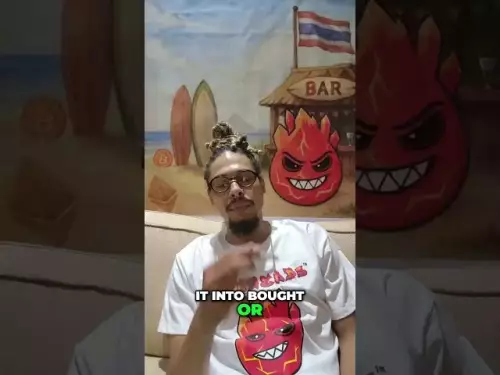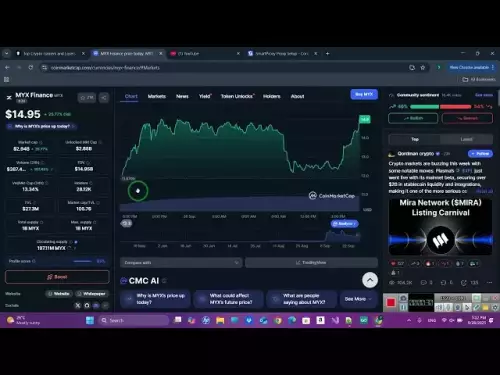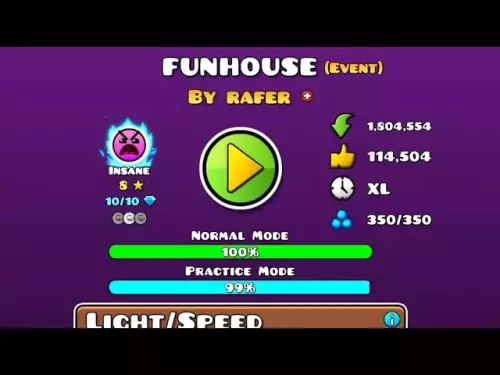-
 bitcoin
bitcoin $109547.008142 USD
0.04% -
 ethereum
ethereum $4011.838726 USD
-0.05% -
 tether
tether $1.000402 USD
-0.01% -
 xrp
xrp $2.798606 USD
0.88% -
 bnb
bnb $970.877944 USD
1.39% -
 solana
solana $202.237275 USD
-0.95% -
 usd-coin
usd-coin $0.999673 USD
0.00% -
 dogecoin
dogecoin $0.229294 USD
-1.15% -
 tron
tron $0.336370 USD
-0.45% -
 cardano
cardano $0.777260 USD
-1.66% -
 hyperliquid
hyperliquid $45.503019 USD
1.73% -
 ethena-usde
ethena-usde $1.000362 USD
0.01% -
 chainlink
chainlink $20.785303 USD
-1.10% -
 avalanche
avalanche $28.755822 USD
-0.11% -
 stellar
stellar $0.358303 USD
-0.48%
What are the advantages and disadvantages of cross-chain issuance for NFT projects?
Cross-chain NFT issuance expands accessibility and reduces costs by enabling NFTs to exist across multiple blockchains, but introduces security risks and complexity in ownership and royalty enforcement.
Aug 11, 2025 at 09:09 am
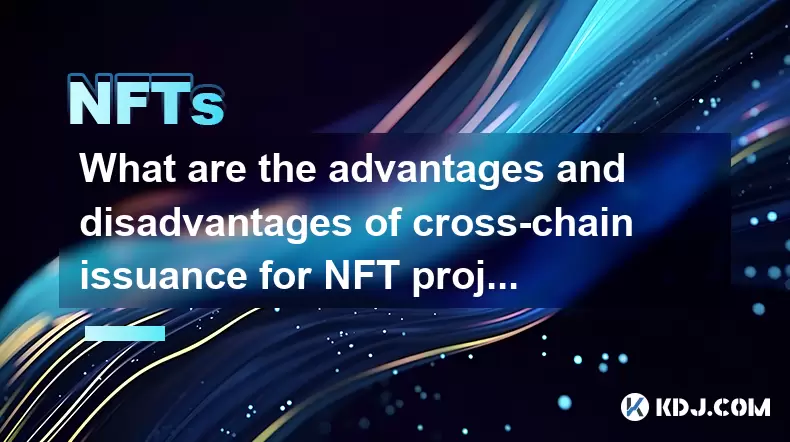
Understanding Cross-Chain NFT Issuance
Cross-chain issuance refers to the process of deploying or minting NFTs (Non-Fungible Tokens) across multiple blockchain networks simultaneously or sequentially. This approach allows digital assets to exist and be traded on different ecosystems such as Ethereum, Polygon, Solana, or Binance Smart Chain. The core technology enabling this functionality includes bridges, wrapped tokens, and interoperability protocols like Chainlink CCIP, Wormhole, or LayerZero. By leveraging these tools, NFT projects can expand their reach beyond a single blockchain’s limitations. The ability to move assets across chains increases liquidity, accessibility, and user engagement, but it also introduces complexity in terms of security, consistency, and governance.
Advantages of Cross-Chain NFT Issuance
Increased accessibility across blockchain ecosystems: Users on various networks can interact with the same NFT collection without being restricted to a single chain. For instance, an NFT originally minted on Ethereum can be mirrored on Polygon, where transaction fees are significantly lower, making it easier for new collectors to participate.
Reduced transaction costs: High gas fees on networks like Ethereum can deter users from purchasing or transferring NFTs. By issuing NFTs on low-cost chains such as Avalanche or Arbitrum, projects can attract budget-conscious buyers while maintaining compatibility with Ethereum-based wallets and marketplaces.
Enhanced liquidity and trading volume: When an NFT is available across multiple exchanges and marketplaces on different chains, its trading frequency increases. This broader distribution helps avoid market stagnation on a single platform and enables arbitrage opportunities that stabilize pricing.
Improved user experience and flexibility: Collectors can choose which blockchain to use based on their preferences for speed, cost, or ecosystem. This flexibility encourages wider adoption, especially among users who already hold assets or wallets on specific chains.
Resilience against network congestion: During periods of high activity on one blockchain, transactions may slow down or become expensive. Cross-chain issuance allows users to switch to less congested networks without losing access to their NFTs, ensuring continuous interaction.
Technical Implementation of Cross-Chain NFTs
To achieve cross-chain NFT issuance, developers must implement interoperability solutions that securely transfer asset data between blockchains. One common method is using token bridging, where the original NFT remains locked on the source chain while a wrapped version is minted on the destination chain. This requires smart contracts on both chains and a trusted or decentralized relayer system.
- Set up a bridge-compatible smart contract on the primary blockchain (e.g., Ethereum) that supports lock-and-mint or burn-and-release mechanisms.
- Deploy a corresponding mirror contract on the target chain (e.g., Fantom) that can receive messages from the bridge and mint equivalent NFTs.
- Integrate a cross-chain messaging protocol such as LayerZero or Axelar to transmit proof of ownership and minting instructions securely.
- Ensure metadata consistency by hosting NFT metadata on decentralized storage like IPFS or Arweave, with uniform URI references across chains.
- Implement recovery and validation mechanisms to prevent double-minting or unauthorized issuance during message transmission.
Each step must be audited for vulnerabilities, particularly around signature verification, message replay attacks, and oracle manipulation.
Disadvantages and Risks of Cross-Chain NFT Issuance
Security vulnerabilities in bridges: Cross-chain bridges are frequent targets for hackers due to the large volumes of assets they handle. A compromised bridge can lead to irreversible loss of NFTs or funds. For example, exploits in bridges like Wormhole or Multichain have resulted in hundreds of millions in losses.
Fragmentation of community and scarcity: When the same NFT exists on multiple chains, it may dilute the perceived rarity. Even if the total supply is maintained through locking mechanisms, collector trust can erode if they perceive the asset as less exclusive.
Complexity in ownership tracking: Users may struggle to verify which version of an NFT is the “original” or whether their cross-chain copy is fully backed. This confusion can lead to fraudulent listings or disputes on marketplaces.
Dependency on third-party protocols: Relying on external interoperability solutions means projects inherit the risks and limitations of those platforms. If a bridge shuts down or suffers an outage, cross-chain functionality halts, affecting user access.
Regulatory uncertainty: Different jurisdictions may treat cross-chain assets differently, especially if NFTs are used for financial instruments. The movement of assets across chains could trigger compliance issues related to anti-money laundering (AML) or securities laws.
Impact on NFT Project Governance and Economics
Cross-chain issuance influences how NFT projects manage tokenomics, royalties, and community incentives. Royalty enforcement becomes more complex when NFTs are traded on chains with different marketplace standards. Some networks lack native royalty support, leading to loss of revenue for creators when secondary sales occur off primary ecosystems.
- Governance tokens linked to NFT ownership may need to be synchronized across chains, requiring cross-chain voting mechanisms.
- Projects must decide whether to allow cross-chain staking or utility, which demands uniform smart contract logic and state synchronization.
- Inflationary models must account for wrapped supply to avoid unintended token dilution.
Misalignment in these areas can undermine project sustainability and user trust.
Frequently Asked Questions
Can a cross-chain NFT be owned on two blockchains at the same time?No, true ownership should be singular at any given time. Most systems use a lock-and-mint model: the original NFT is locked on the source chain before a representative version is created on the destination chain. Simultaneous ownership would break scarcity and lead to duplication.
How do I verify the authenticity of a cross-chain NFT?Check the contract address on the respective blockchain and confirm it is listed in the official project documentation. Use tools like Etherscan or Solscan to verify the bridge transaction and ensure the NFT was minted through an authorized mechanism. Look for verified badges on marketplaces and confirm metadata links point to official sources.
Are royalties guaranteed on all chains for cross-chain NFTs?Not automatically. Royalty enforcement depends on the marketplace and blockchain. For example, Ethereum-based platforms like OpenSea support royalties, but many Solana or Polygon marketplaces do not enforce them by default. Projects may need to implement on-chain royalty enforcement tools like EIP-2981 or use platforms that honor creator fees.
What happens if the bridge used for cross-chain NFTs gets hacked?If a bridge is compromised, NFTs that were in the process of being transferred or locked may be stolen or duplicated. Users might lose access to their assets, and the project may need to intervene with emergency upgrades or whitelisting. It is critical to use audited, decentralized bridges and monitor bridge security alerts.
Disclaimer:info@kdj.com
The information provided is not trading advice. kdj.com does not assume any responsibility for any investments made based on the information provided in this article. Cryptocurrencies are highly volatile and it is highly recommended that you invest with caution after thorough research!
If you believe that the content used on this website infringes your copyright, please contact us immediately (info@kdj.com) and we will delete it promptly.
- Snorter Bot: Your Ticket to 100x Crypto Presale Gems?
- 2025-09-29 06:25:16
- XRP Payments, Daily Wages, and Ripple Chief: A Revolution in Payroll?
- 2025-09-29 06:25:16
- XRP, Ripple, and the SWIFT Payments Revolution: A New Era?
- 2025-09-29 06:30:01
- RedotPay, Stablecoin, and Investment: A New Era of Digital Finance?
- 2025-09-29 06:30:01
- MoonBull: The Crypto to Watch in Q4 2025 for APY Rewards
- 2025-09-29 06:30:01
- MoonBull Presale: The Meme Coin Opportunity You Can't Miss (NY Edition)
- 2025-09-29 06:30:12
Related knowledge

How can I determine the authenticity of an NFT project?
Sep 23,2025 at 05:18pm
Understanding the Project Team and Their Background1. Research the identities of the team members behind the NFT project. Verified social media profil...

What's the difference between NFTs and traditional collectibles?
Sep 19,2025 at 12:55pm
Digital Ownership and Provenance1. NFTs are built on blockchain technology, which ensures transparent and immutable records of ownership. Every transa...
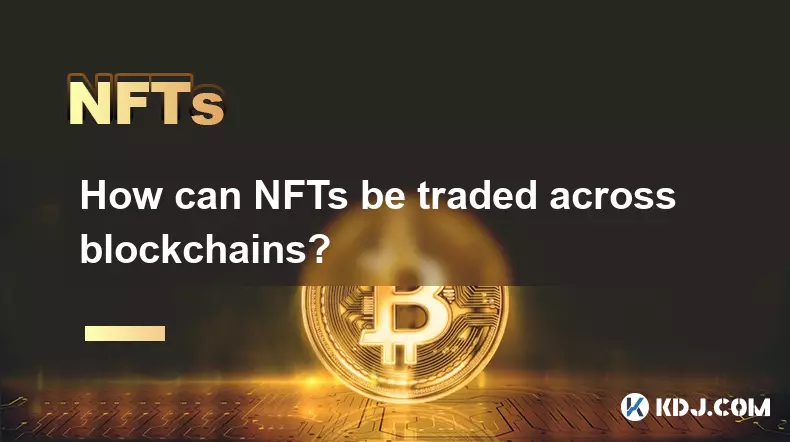
How can NFTs be traded across blockchains?
Sep 19,2025 at 12:00pm
Understanding Cross-Chain NFT Trading1. Non-fungible tokens (NFTs) are digital assets that represent ownership of unique items on a blockchain. Origin...

How is NFT rarity calculated?
Sep 18,2025 at 07:54pm
Understanding NFT Rarity Metrics1. NFT rarity is determined by analyzing the uniqueness of individual traits within a collection. Each NFT typically c...
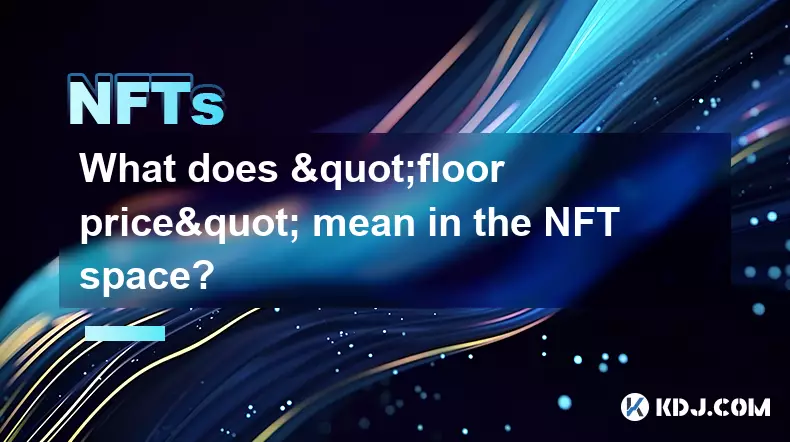
What does "floor price" mean in the NFT space?
Sep 22,2025 at 06:36am
Floor Price: A Core Metric in the NFT Marketplace1. The term floor price refers to the lowest current asking price for any item within a specific NFT ...

How do NFTs help content creators?
Sep 18,2025 at 08:00am
NFTs Empower Creators with Ownership and Monetization1. NFTs provide content creators with verifiable ownership of their digital works, ensuring authe...

How can I determine the authenticity of an NFT project?
Sep 23,2025 at 05:18pm
Understanding the Project Team and Their Background1. Research the identities of the team members behind the NFT project. Verified social media profil...

What's the difference between NFTs and traditional collectibles?
Sep 19,2025 at 12:55pm
Digital Ownership and Provenance1. NFTs are built on blockchain technology, which ensures transparent and immutable records of ownership. Every transa...

How can NFTs be traded across blockchains?
Sep 19,2025 at 12:00pm
Understanding Cross-Chain NFT Trading1. Non-fungible tokens (NFTs) are digital assets that represent ownership of unique items on a blockchain. Origin...

How is NFT rarity calculated?
Sep 18,2025 at 07:54pm
Understanding NFT Rarity Metrics1. NFT rarity is determined by analyzing the uniqueness of individual traits within a collection. Each NFT typically c...

What does "floor price" mean in the NFT space?
Sep 22,2025 at 06:36am
Floor Price: A Core Metric in the NFT Marketplace1. The term floor price refers to the lowest current asking price for any item within a specific NFT ...

How do NFTs help content creators?
Sep 18,2025 at 08:00am
NFTs Empower Creators with Ownership and Monetization1. NFTs provide content creators with verifiable ownership of their digital works, ensuring authe...
See all articles





















